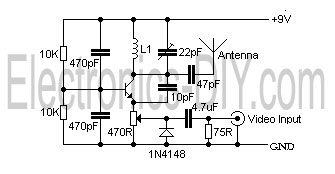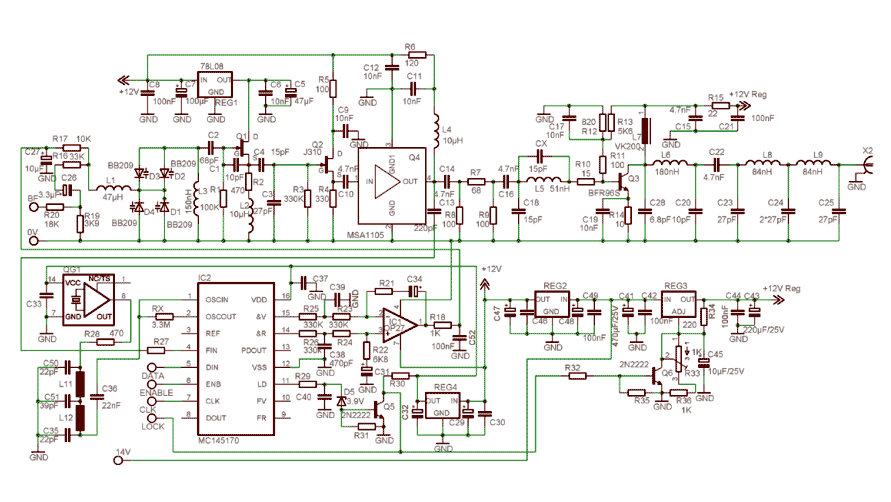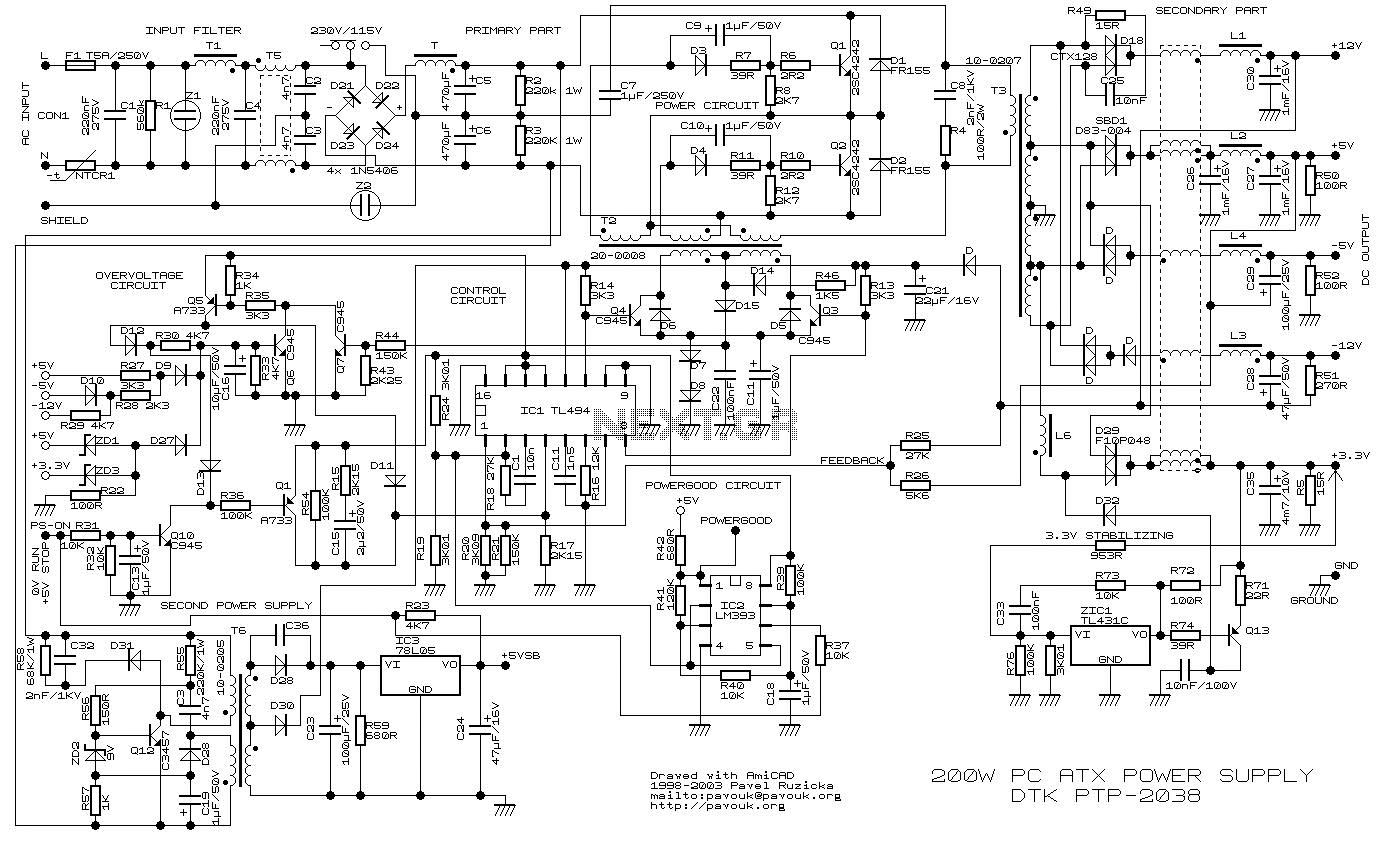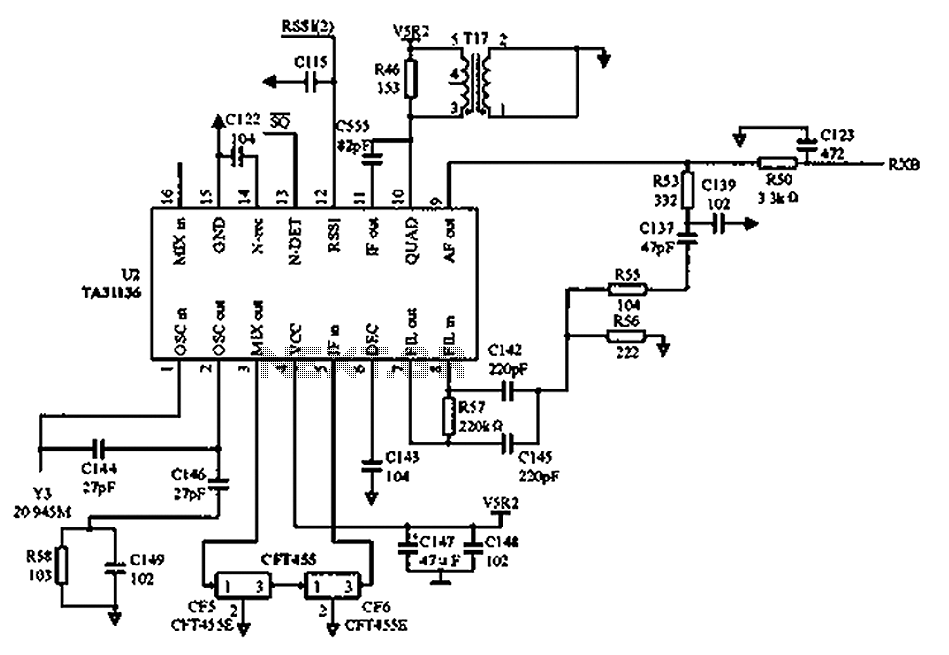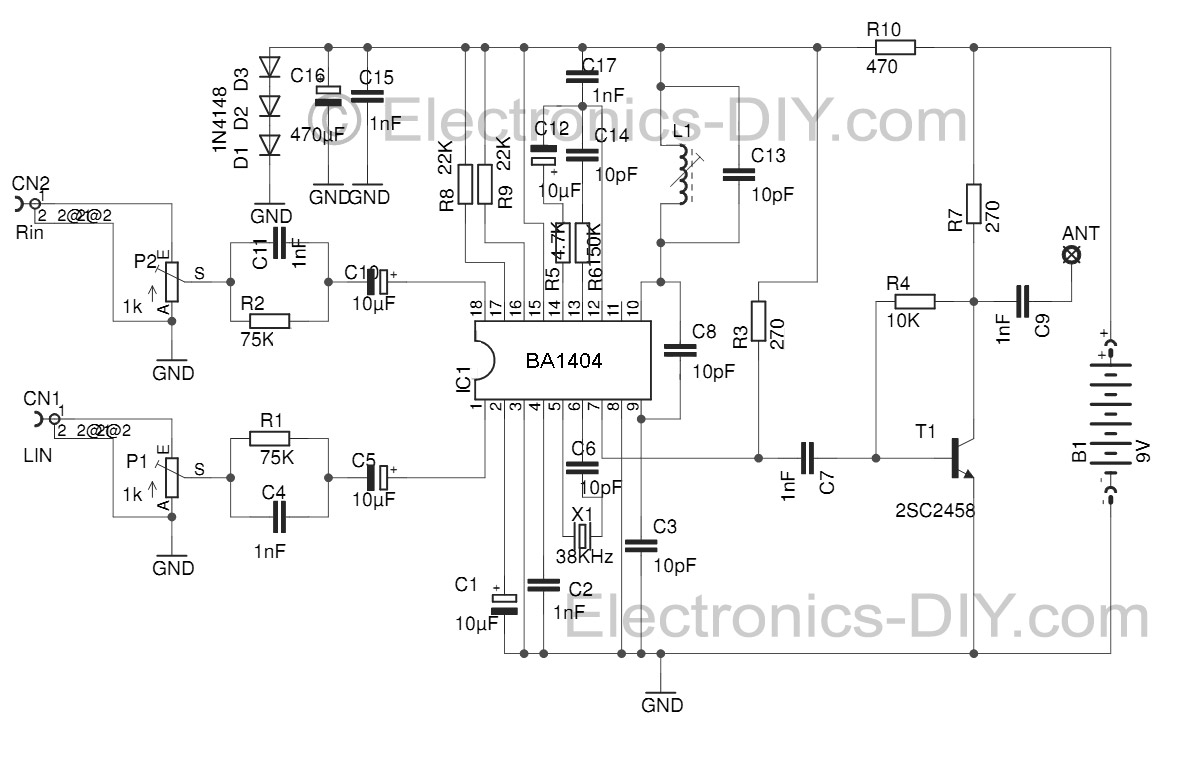
200W 136 kHz transmitter
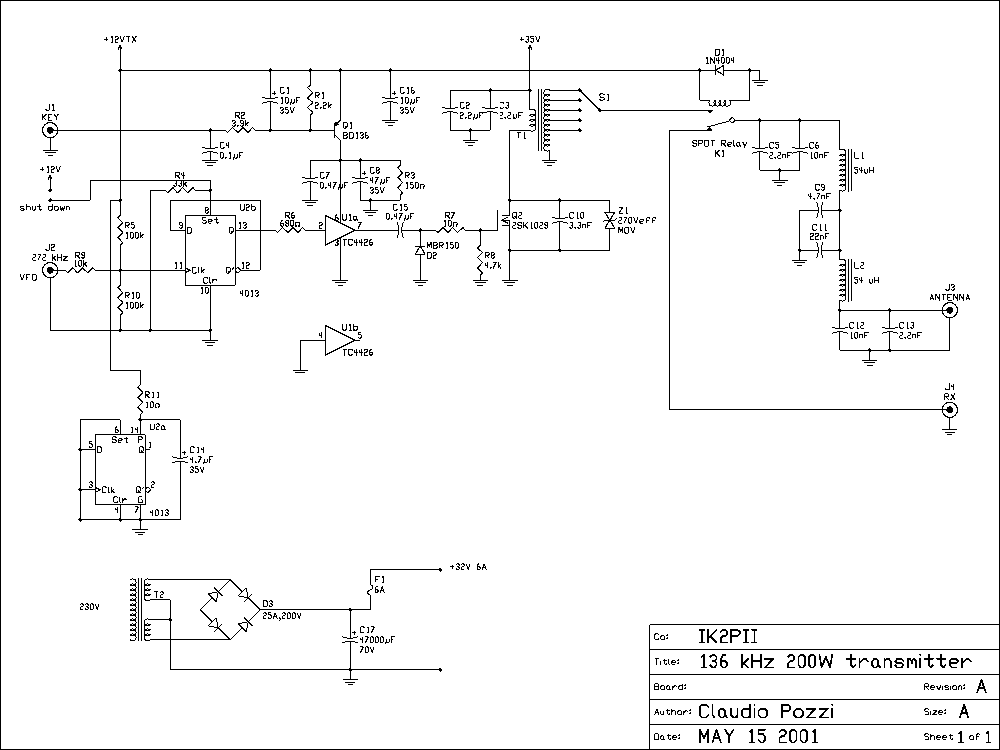
Output transformer core sourced from a flea market, light blue in color, marked as A-438281-2-9H9-3, with an outer diameter of 47 mm, an inner diameter of 24 mm, and a height of 13 mm. No data is available regarding the µ Mosfet, which is also from a flea market, characterized as an obsolete device (no data sheet available) and inexpensive (costing 1 euro), similar to the well-known IRFP450. The ARRL handbook indicates that RF non-resonant transformers must have an inductive reactance (XL) at least four times the impedance. An XL of six times the impedance is utilized for this design. The secondary winding is designed to match an antenna impedance of approximately 50 ohms. Table 3 provides the secondary winding turns, calculated using the appropriate formula. The transformer turn ratio of 10 to 30 confirms the impedance matching from the 3.3-ohm output stage to the 50-ohm antenna system (refer to formula 3). The input stage can accommodate a signal range of 5 to 12 V peak-to-peak (TTL or CMOS, though not tested, including sinusoidal signals). A crystal oscillator operates at 27.xxx MHz, divided by 100. The MOSFET is mounted on a heat sink salvaged from an old Pentium 2 CPU, with a small fan operating at 12 V. Another fan within the enclosure helps maintain a comfortable temperature for the transmitter; the source pin connects directly to the ground plane. Bypass capacitors C2 and C3 should be of the highest quality available, rated for four times the DC voltage. Two 1 µF capacitors and one 2.2 µF polyester capacitor rated at 250 volts are used in parallel. Electrolytic capacitors should be avoided, and terminals should be kept as short as possible.
The output transformer core, identified as A-438281-2-9H9-3, serves a critical role in RF applications, particularly in impedance matching between the transmitter and the antenna. The selection of a transformer core with specific dimensions (47 mm OD, 24 mm ID, and 13 mm height) indicates a deliberate choice to optimize magnetic coupling and minimize losses. The use of an inductive reactance of six times the impedance reflects a design decision aimed at enhancing performance beyond the minimum recommended level, thereby improving efficiency and signal integrity.
The secondary winding's turns ratio of 10 to 30 is essential for achieving the desired impedance transformation from the low impedance output stage (3.3 ohms) to the standard antenna impedance of 50 ohms. This transformation is crucial for maximizing power transfer and minimizing reflections that could degrade performance.
The input stage's capability to handle a signal range of 5 to 12 V peak-to-peak allows for flexibility in signal sources, accommodating both TTL and CMOS signals as well as sinusoidal waveforms. The crystal oscillator's frequency division ensures that the output signal remains within the operational frequency band, which is vital for effective RF transmission.
Thermal management is addressed through the use of a heat sink from a Pentium 2 CPU, which provides adequate dissipation for the MOSFET, preventing thermal overload. The inclusion of a dedicated fan further ensures that the transmitter operates within safe temperature limits, enhancing reliability and longevity.
The choice of bypass capacitors is critical; using high-quality polyester capacitors rated for four times the DC voltage minimizes the risk of failure and ensures stable operation. The configuration of two 1 µF and one 2.2 µF capacitor in parallel optimizes filtering capabilities, effectively decoupling the power supply from high-frequency noise. The emphasis on avoiding electrolytic capacitors and minimizing terminal lengths further contributes to the overall performance and reliability of the circuit, ensuring that parasitic effects are kept to a minimum.Output transformer core: coming from flea market, light blue color, marked as A-438281-2-9H9-3, OD = 47 mm, ID = 24 mm, height = 13 mm. No information about µ Mosfet to be used: coming from flea market, with the following characteristics.
It`s an obsolete (no data sheet could be retrieved) and cheap (1 euro) device and is similar to the well known IRFP450. The ARRL handbook suggests that RF non resonant transformer must have an inductive reactance (XL) at least 4 times the impedance. I decided to use XL= 6 times the impedance. The secondary winding should match the antenna impedance, in my case about 50 ohms. Table 3 report the secondary winding turns, computed with the following formula: The transformer turn ratio (10 / 30) confirms the impedance matching from the 3.
3 ohm of the output stage to the 50 ohm of the antenna system (see formula 3). The input stage can handle a 5 to 12 V pp signal (TTL or CMOS, probably, but not tested, also sinusoidal signals). My Xtal oscillator uses an ex CB Xtal 27. xxx MHz divided by 100. The mosfet is mounted on a heat sink coming from an old Pentium 2 CPU, with the little fan running at 12 V.
Another fan in the box keeps the temperature of the transmitter comfortable; the source pin go to the ground plane directly. The by-pass capacitors C2 e C3 must be of the best quality you can find, rated to 4 times Vdc, I use two 1 µF and one 2, 2 µF polyester 250 volt in parallel.
Don`t use electrolytic capacitors and keep the terminals as short as possible. 🔗 External reference
The output transformer core, identified as A-438281-2-9H9-3, serves a critical role in RF applications, particularly in impedance matching between the transmitter and the antenna. The selection of a transformer core with specific dimensions (47 mm OD, 24 mm ID, and 13 mm height) indicates a deliberate choice to optimize magnetic coupling and minimize losses. The use of an inductive reactance of six times the impedance reflects a design decision aimed at enhancing performance beyond the minimum recommended level, thereby improving efficiency and signal integrity.
The secondary winding's turns ratio of 10 to 30 is essential for achieving the desired impedance transformation from the low impedance output stage (3.3 ohms) to the standard antenna impedance of 50 ohms. This transformation is crucial for maximizing power transfer and minimizing reflections that could degrade performance.
The input stage's capability to handle a signal range of 5 to 12 V peak-to-peak allows for flexibility in signal sources, accommodating both TTL and CMOS signals as well as sinusoidal waveforms. The crystal oscillator's frequency division ensures that the output signal remains within the operational frequency band, which is vital for effective RF transmission.
Thermal management is addressed through the use of a heat sink from a Pentium 2 CPU, which provides adequate dissipation for the MOSFET, preventing thermal overload. The inclusion of a dedicated fan further ensures that the transmitter operates within safe temperature limits, enhancing reliability and longevity.
The choice of bypass capacitors is critical; using high-quality polyester capacitors rated for four times the DC voltage minimizes the risk of failure and ensures stable operation. The configuration of two 1 µF and one 2.2 µF capacitor in parallel optimizes filtering capabilities, effectively decoupling the power supply from high-frequency noise. The emphasis on avoiding electrolytic capacitors and minimizing terminal lengths further contributes to the overall performance and reliability of the circuit, ensuring that parasitic effects are kept to a minimum.Output transformer core: coming from flea market, light blue color, marked as A-438281-2-9H9-3, OD = 47 mm, ID = 24 mm, height = 13 mm. No information about µ Mosfet to be used: coming from flea market, with the following characteristics.
It`s an obsolete (no data sheet could be retrieved) and cheap (1 euro) device and is similar to the well known IRFP450. The ARRL handbook suggests that RF non resonant transformer must have an inductive reactance (XL) at least 4 times the impedance. I decided to use XL= 6 times the impedance. The secondary winding should match the antenna impedance, in my case about 50 ohms. Table 3 report the secondary winding turns, computed with the following formula: The transformer turn ratio (10 / 30) confirms the impedance matching from the 3.
3 ohm of the output stage to the 50 ohm of the antenna system (see formula 3). The input stage can handle a 5 to 12 V pp signal (TTL or CMOS, probably, but not tested, also sinusoidal signals). My Xtal oscillator uses an ex CB Xtal 27. xxx MHz divided by 100. The mosfet is mounted on a heat sink coming from an old Pentium 2 CPU, with the little fan running at 12 V.
Another fan in the box keeps the temperature of the transmitter comfortable; the source pin go to the ground plane directly. The by-pass capacitors C2 e C3 must be of the best quality you can find, rated to 4 times Vdc, I use two 1 µF and one 2, 2 µF polyester 250 volt in parallel.
Don`t use electrolytic capacitors and keep the terminals as short as possible. 🔗 External reference
